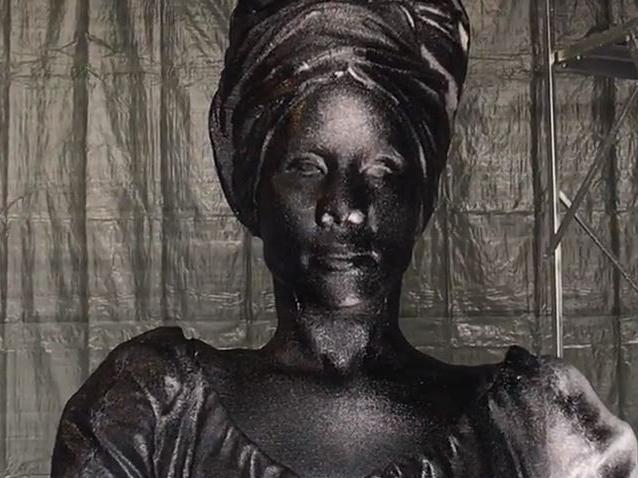Denmark gets 23ft regal statue of ‘rebel queen’ who led fiery revolt against colonialism
'This project is about challenging Denmark’s collective memory and changing it'

The statue of the woman is nearly 23ft tall. Her head is wrapped and she stares straight ahead while sitting barefoot, but regally, in a wide-backed chair, clutching a torch in one hand and a tool used to cut sugar cane in the other.
In Denmark, where most of the public statues represent white men, two artists on Saturday unveiled the striking statue that portrays a 19th century rebel queen who led a fiery revolt against Danish colonial rule in the Caribbean.
It’s being billed as Denmark’s first public monument to a black woman.
The sculpture was inspired by Mary Thomas, who with two other female leaders known as “Queens” unleashed an uprising in 1878 called the “Fireburn”. Fifty plantations and most of the town of Frederiksted on the west coast of St Croix were torched.
“This project is about challenging Denmark’s collective memory and changing it,” Virgin Islands artist La Vaughn Belle, one of two principal forces behind the statue, said in a statement.
The unveiling comes at the end of a centennial year commemorating the sale by Denmark of three islands to the United States on 3 March 3 1917: St Croix, St John and St Thomas. The price: $25m (£17.8m).
Though Denmark prohibited transatlantic slave trafficking in 1792, it didn’t rush to enforce the ban. The rule took effect 11 years later and slavery continued until 1848.
“They wanted to fill the stocks first” and ensure enough slaves would remain to keep plantations running, said Niels Brimnes, an associate professor from Aarhus University and a leading expert on colonialism in Denmark.
Three decades after slavery formally ended on what are today known as the US Virgin Islands, conditions for the former slaves had not improved significantly. That fomented the uprising on St Croix.
Danish artist Jeannette Ehlers, who teamed up with Ms Belle to create the Queen Mary monument, said, “Ninety-eight per cent of the statues in Denmark are representing white males”.
Henrik Holm, senior research curator at Denmark’s National Gallery of Art, said in a statement: “It takes a statue like this to make forgetting less easy. It takes a monument like this to fight against the silence, neglect, repression and hatred.”
The New York Times
Join our commenting forum
Join thought-provoking conversations, follow other Independent readers and see their replies
Comments